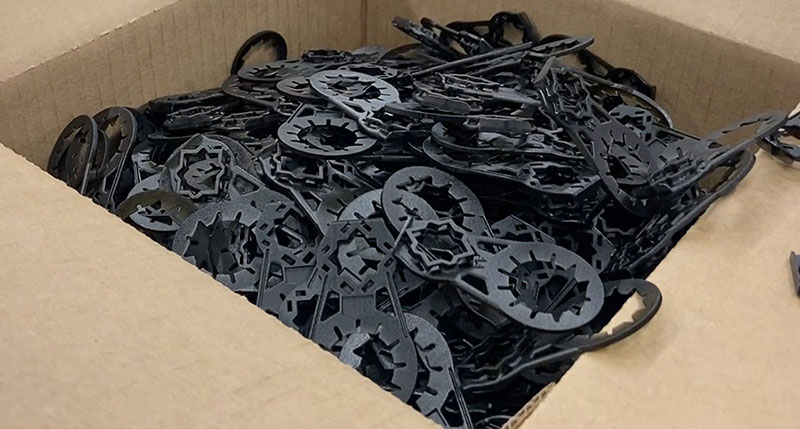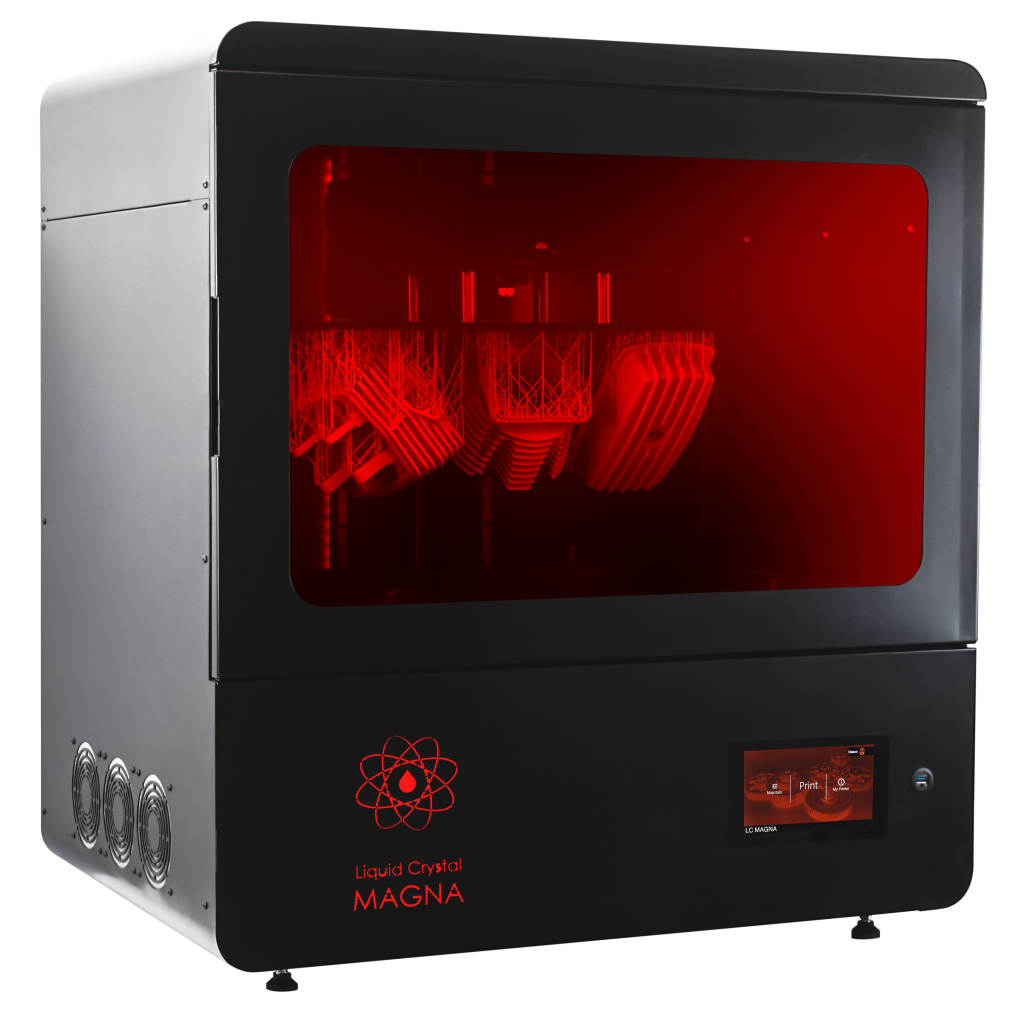Utah-based 3D printed parts manufacturer Merit3D has agreed to deliver what is being called ‘the largest ever 3D printed parts order.’
Florida-based adhesives manufacturer Adhesive Technology Corporation placed the order of over 1 million 3D printed parts back in May. The parts in question are hangers for epoxy products, used to attach the mixing nozzle to the epoxy tube. These components are being delivered at a rate of 40,000 pieces per week.
Merit3D was able to meet this mass production order after receiving funding as part of the $10 million Utah Manufacturing Modernization Grant. This program aims to incentivize Utah business to modernize and develop manufacturing within the US state.
This deal with Adhesive Technology Corporation forms part of Merit3D’s ongoing mission to reshore the mass production of parts into the US. The funding will allow Merit3D to compete with overseas manufacturers, by increasing the company’s capacity to 3D print parts at an affordable price.
“It’s always very hard competing overseas because of the low cost of manufacturing, but now that we were able to invest in high tech equipment, we’ve taken a giant step forward in leveling the playing field,” commented Merit3D owner Spencer Loveless.
“This is a huge stride in the modernisation of manufacturing and converting companies that traditionally do manufacturing overseas to be able to bring it back on the US shore using new technologies,” added Merit3D COO Blake Merrell.

Merit3D and Adhesive Technology Corporation’s million part order
Adhesive Technology Corporation turned to Merit3D after its supply chain was disrupted, due to the unavailability of an injection mold tool. The Merit3D team worked to create a quality part that was within Adhesive Technology Corporation’s budget and could be mass-produced to the desired quantity. According to Merit3D, the product moved from the design stage to production in two weeks and exceeds the durability of the HPDE equivalent.
20 Photocentric Liquid Crystal Magna resin 3D printers, using BASF Ultracur EPD 1006, are being leveraged by Merit3D to produce the parts. In one batch, 400 parts were successfully 3D printed in a single print run of 225 minutes on each 3D printer. Photocentric claims that its Liquid Crystal Magna offering also allows for customization and multiple design iterations, optimizing the components for a range of use cases.
“At Photocentric, our goal is to facilitate additive manufacturing solutions that are industrial, scalable, and affordable,” explained Sally Tipping, Photocentric Sales Director, in an interview with All3DP. “There is still this difference in cost between additive manufacturing and injection molding, but it is very much our aim to bring the cost of the materials down.”
According to Merit3D, this order ‘sets the precedent’ for how parts should be produced in the future. Traditionally, any order of 50,000 to 250,000 pieces is fulfilled using injection molding. Merit3D claims that using additive manufacturing can enable companies to take design and manufacturing to a new level, reshoring production in the process.
“This is huge because no longer do they have to order millions of parts at a time and wait for long lead times to be able to get their parts. The needed parts can come using a just in time manufacturing model,” added Loveless.

Large quantity orders in AM
Whilst supposedly the largest 3D printed parts order on record, this deal is by no means the only large quantity order to be placed within the 3D printing industry.
Earlier this year, Montreal-based metal powder producer and plasma torch specialist PyroGenesis received an order for five metric tonnes (5,000kg) of plasma atomized titanium metal powders used in 3D printing. This order was made by an advanced materials company in the US, the identity of which has not been disclosed.
This deal marks Pyrogenesis’s first commercial “by-the-tonne” order for its atomized titanium metal powders produced using the company’s NextGen plasma atomized system. “This represents our full entrance into the titanium metal powders marketplace,” commented Massimo Dattilo, VP, PyroGenesis Additive.
During a recent interview with 3D Printing Industry Lasse Staal, Director of Business Development at Nexa3D, highlighted the personalized hearing aid and dental aligner industries as using 3D printing to achieve million part production runs. Staal claimed that millions of 3D printed hearing aid shells are produced each year, with tens of thousands of 3D printers running in parallel.
“You need to be able to make as many things as possible with one manufacturing setup,” explained Staal. “Instead of having one machine doing one specific job all day long, one machine can contribute to the manufacturing of a lot of different products.”
Subscribe to the 3D Printing Industry newsletter to keep up to date with the latest 3D printing news. You can also follow us on Twitter, like our Facebook page, and subscribe to the 3D Printing Industry Youtube channel to access more exclusive content.
Are you interested in working in the additive manufacturing industry? Visit 3D Printing Jobs to view a selection of available roles and kickstart your career.
Featured image shows the 3D printed hangers. Photo via Merit3D.


